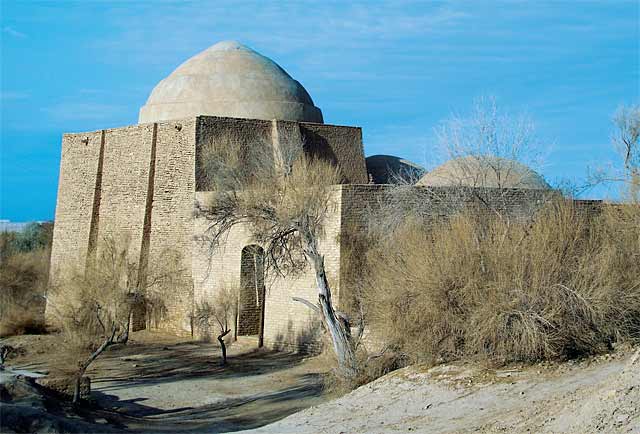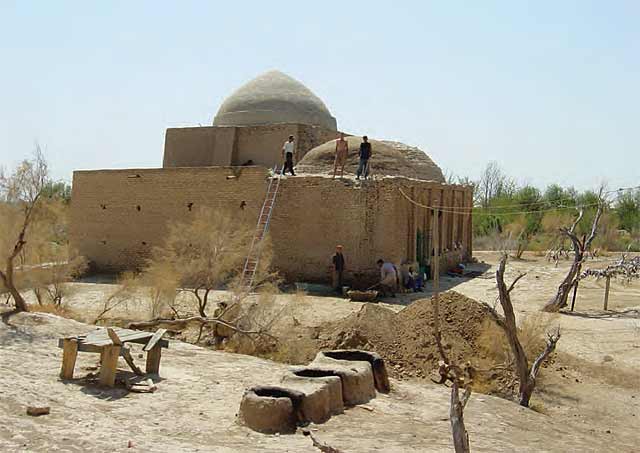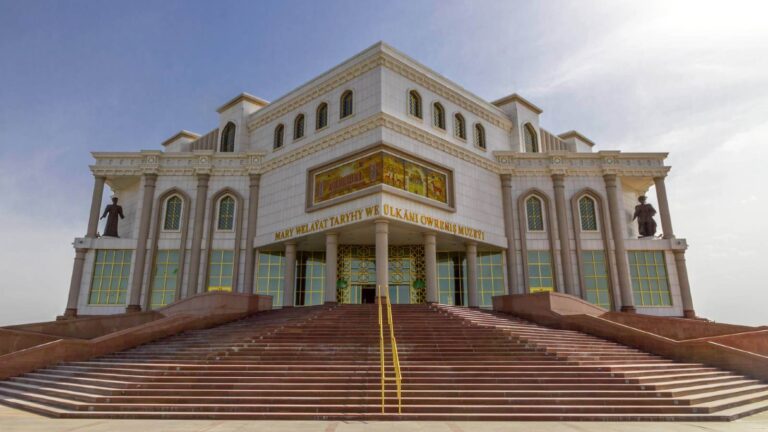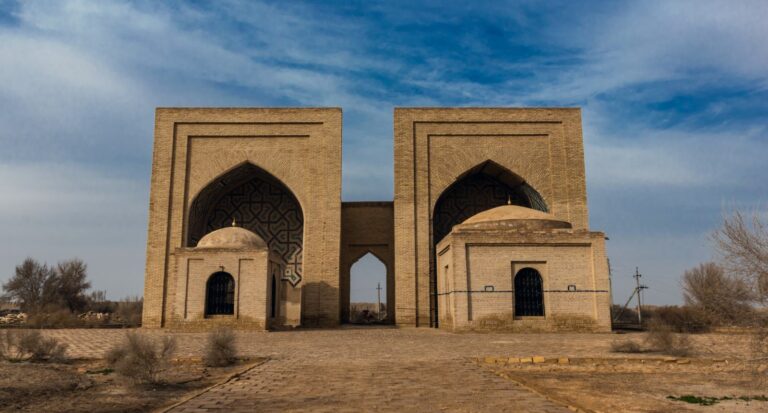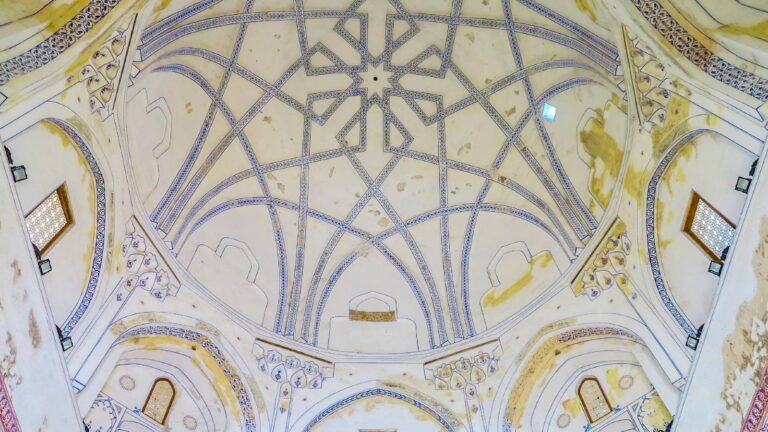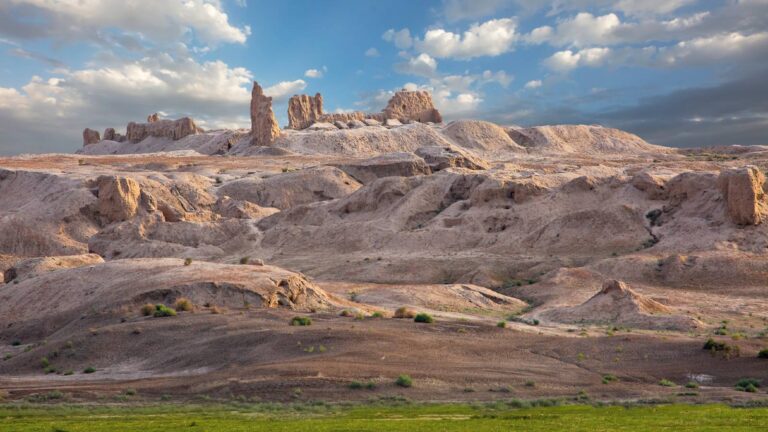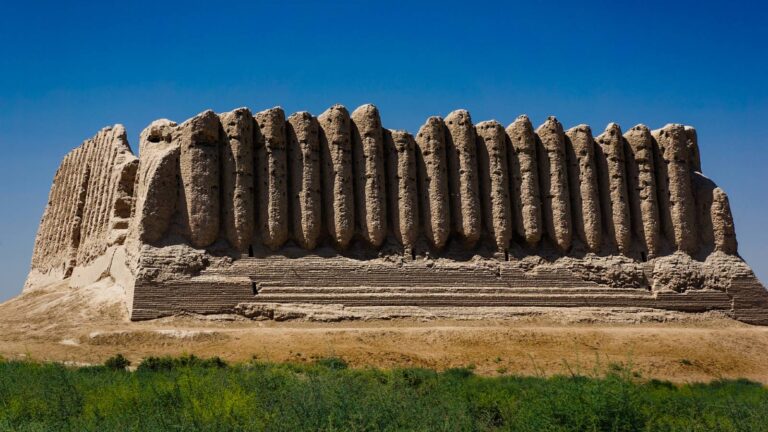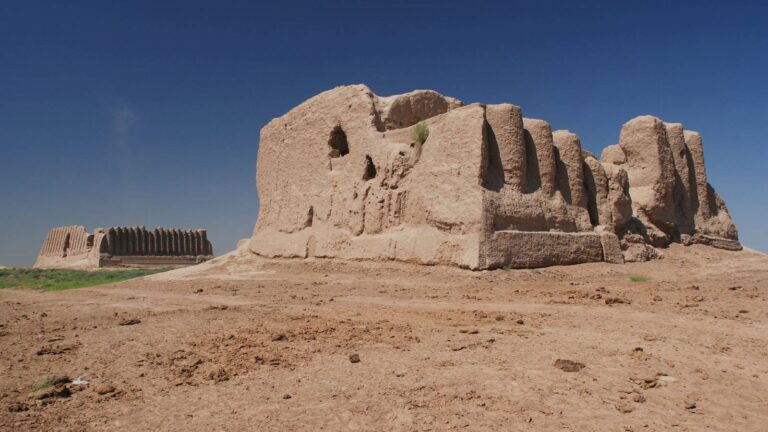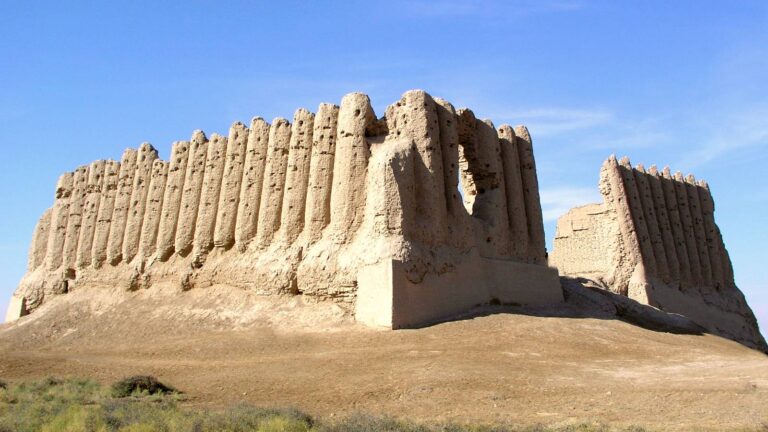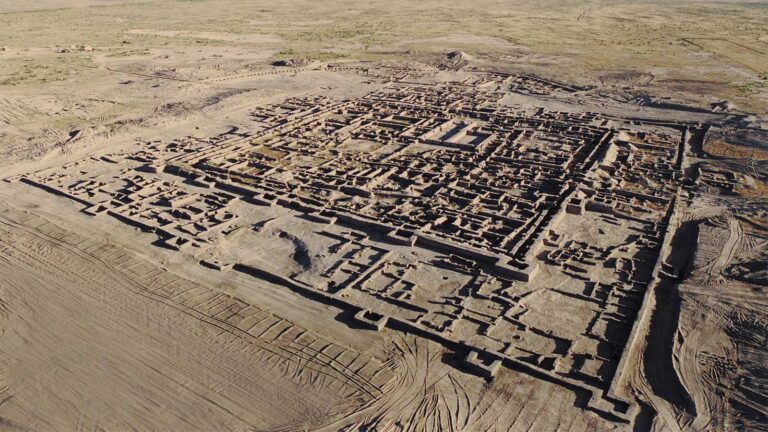Getting There
Mausoleum of Muhammad ibn Zayd is located within the Ancient Merv State Historical and Cultural Reserve, about 2 km north-west of the Sultan Sanjar mausoleum.
What to Expect
As Muhammad ibn Zayd died in the early 9th century in the Abbasid Caliphate, it is extremely unlikely that his remains were re-interred at this site. More likely it served as a commemorative memorial for the local Sh’ia population.
The main structure is rectangular in shape and comprises several domed chambers, with Zayd’s memorial chamber located in the southwest corner. The building faces WSW so that its west wall acts as a qibla, indicating the direction of Mecca. Curiously, although it did not serve as a mosque, the memorial chamber includes a mihrab (niche) that is typically located on the qibla wall to orient worshippers in the proper direction.
The building is entirely built of baked bricks and lacks any decorative treatment apart from the bricks themselves. In this respect it is very similar to the Ismail Somoni Mausoleum in Bukhara, which ranks as the earliest known Islamic funerary monument in central Asia. Greater still is the level achieved in a baked brick calligraphic band, in kufic script, that runs around the perimeter of the mausoleum’s main chamber.
History
The mausoleum stands about 1.5 kilometers WNW of the Sultan Sanjar Mausoleum. It was likely constructed in 1140, during the reign of Sultan Sanjar (1118-1157), the last sultan of the Great Seljuk Empire. The tomb seems to have escaped destruction during the 1221 Mongol conquest of the city when the majority of the city’s inhabitants were massacred and a number of buildings destroyed.
As Muhammad ibn Zayd Mausoleum died in the early 9th century in the Abbasid Caliphate, it is extremely unlikely that his remains were re-interred at this site. More likely it served as a commemorative memorial for the local Sh’ia population. The main structure is rectangular in shape and comprises several domed chambers, with Zayd’s memorial chamber located in the southwest corner. The building faces WSW so that its west wall acts as a qibla, indicating the direction of Mecca.
Curiously, although it did not serve as a mosque, the memorial chamber includes a mihrab (niche) that is typically located on the qibla wall to orient worshippers in the proper direction.
Facilities Available
No facilities

